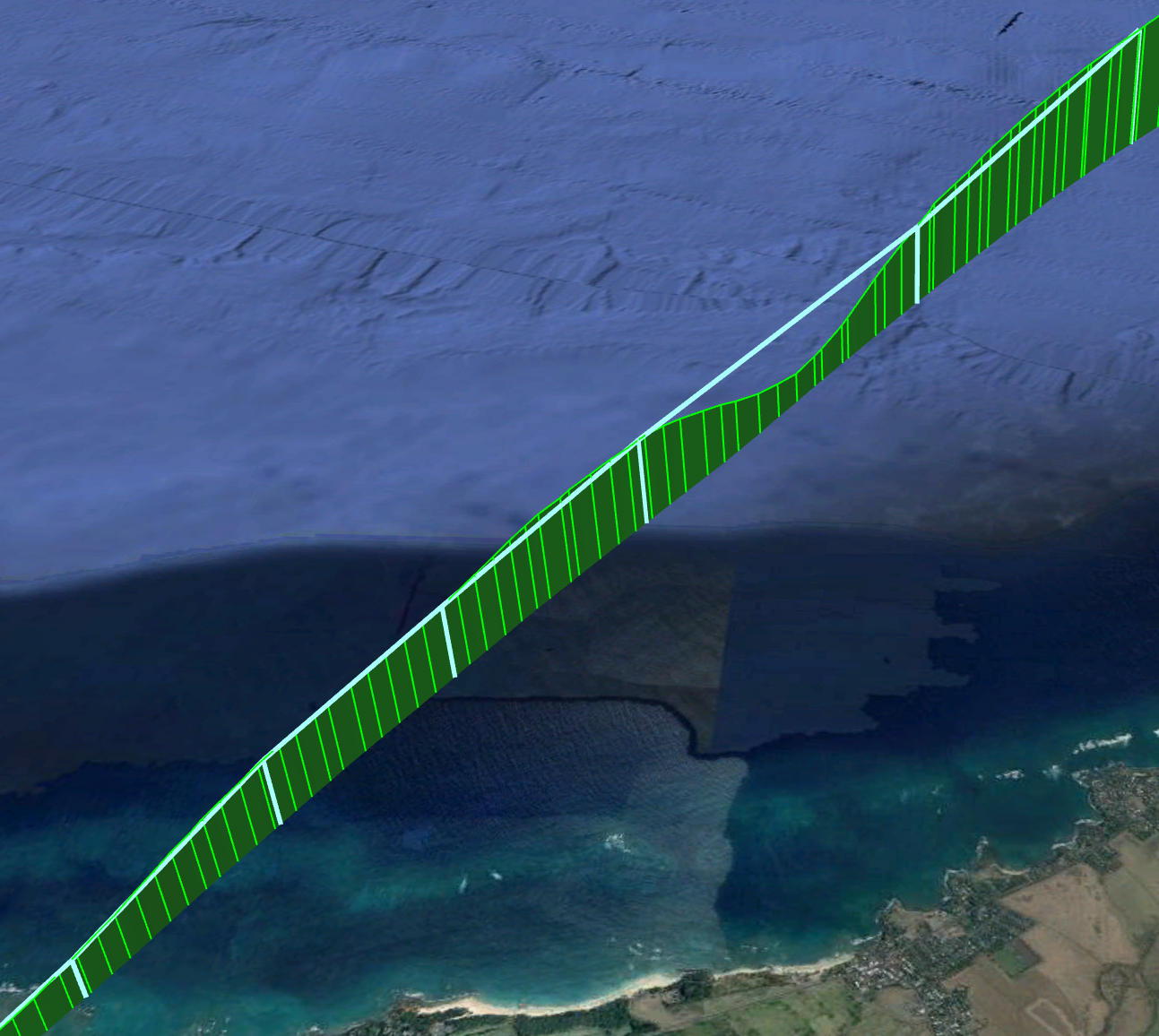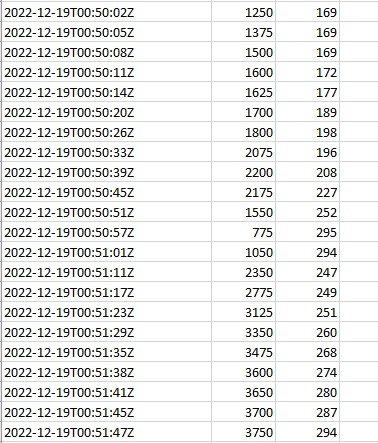United 777 "dives" after takeoff from OGG
Thread Starter
Avherald mantains it didn't happen as reported:
Bizarrely, the argument that it didn't happen is justified by citing the FlightAware ADS-B log, despite the fact that it contains no data points at all during the 25 seconds of the roller-coaster.
Incident: United B772 at Kahului on Dec 18th 2022, pilots filed safety report
"In addition, if indeed 2.7G were encountered, passengers would certainly have reacted and this occurrence would have been all over the media the next day at the very latest. If the FDR indeed had recorded 2.7G, then the aircraft could not have flown within 2.5 hours after landing due to the mandatory structural inspection."
"From my editorial point of view it is clear however, that the occurrence did not happen along the lines of the report that surfaced on Sunday."
Incident: United B772 at Kahului on Dec 18th 2022, pilots filed safety report
Join Date: Jul 2013
Location: In a Pineapple Under the Sea
Age: 61
Posts: 152
Likes: 0
Received 0 Likes
on
0 Posts
Avherald mantains it didn't happen as reported:
Bizarrely, the argument that it didn't happen is justified by citing the FlightAware ADS-B log, despite the fact that it contains no data points at all during the 25 seconds of the roller-coaster.
Incident: United B772 at Kahului on Dec 18th 2022, pilots filed safety report
Bizarrely, the argument that it didn't happen is justified by citing the FlightAware ADS-B log, despite the fact that it contains no data points at all during the 25 seconds of the roller-coaster.
Incident: United B772 at Kahului on Dec 18th 2022, pilots filed safety report
Thread Starter
Original FR24 plot (green) plus all of FlightAware's data points (blue), the latter cited by Avherald as "evidence" it was a non-event:

That will save the NTSB a lot of work.

That will save the NTSB a lot of work.

Only half a speed-brake
to consider:
pax with piloting background saying it did not feel like a nose-dive or push-over is actually consistent with a banked loss of altitude on a steady positive g. One of the reasons it might go unnoticed by the pilots in the first place. Someone sitting in another location of the humongous cabin might get a markedly different perception.
Noted, the tracked open data do not seem to show the expected heading divergence.
Ceterum censeo CVR...
pax with piloting background saying it did not feel like a nose-dive or push-over is actually consistent with a banked loss of altitude on a steady positive g. One of the reasons it might go unnoticed by the pilots in the first place. Someone sitting in another location of the humongous cabin might get a markedly different perception.
Noted, the tracked open data do not seem to show the expected heading divergence.
Ceterum censeo CVR...
A microburst can certainly upset the flight path without warning, and there is a tendency to blame the crew for mishandling until the data is analyzed - been there.
There are a plethora of data sources flying about. What will count is the fdr or QAR, especially since they offer sub second resolution.
There are a plethora of data sources flying about. What will count is the fdr or QAR, especially since they offer sub second resolution.
Join Date: Apr 2019
Location: Austin, TX
Posts: 2
Likes: 0
Received 0 Likes
on
0 Posts
A microburst can certainly upset the flight path without warning, and there is a tendency to blame the crew for mishandling until the data is analyzed - been there.
There are a plethora of data sources flying about. What will count is the fdr or QAR, especially since they offer sub second resolution.
There are a plethora of data sources flying about. What will count is the fdr or QAR, especially since they offer sub second resolution.
I guess I am thinking this really happened. It sounds like the captain coming on the PA and saying "you might have felt a couple of Gs" is indication that there was indeed a steep descent and immediate ascent. I also suspect that he didn't pick that number randomly and likely lowballed it (natural human tendency in a situation like this). The fact that this statement was made along with the FR24 data, and the pilots receiving retraining makes me fairly certain that what has been floated (incorrect flap retraction / loss of lift / recovery) is the most likely scenario. I am curious whether UA preserved the FDR data and/or CVR data.
Only half a speed-brake
You can expect the CVR and FDR being unobtainable for all the usual reasons. Some of those are not wrong.
QAR is a different beast, though the data might not be allowed to leave a certain office or even a computer station. That information, alongside honest best crew recollection, will uncover the dynamics in very precise detail.
QAR is a different beast, though the data might not be allowed to leave a certain office or even a computer station. That information, alongside honest best crew recollection, will uncover the dynamics in very precise detail.
Last edited by FlightDetent; 17th Feb 2023 at 16:47.
Join Date: Dec 2020
Location: The world
Posts: 24
Likes: 0
Received 0 Likes
on
0 Posts
Passenger Roid Williams recounts the episode to the Washington Post:
Boarding and taxiing went smoothly, he said. The pilots squared the Boeing 777 with the runway, hit the throttle, accelerated down the airstrip and took off. For about a minute, they climbed normally.
Then, the nose pitched up and the plane started ascending at “an alarming angle,” Williams wrote in a Facebook post recounting the incident.
“That’s when you started to hear folks let out a few screams,” he told The Post.
Williams, who studied aviation, said he feared the plane might stall. After climbing steeply for three to five seconds, the plane went into a sudden nosedive.
. . .
After diving for nearly 20 seconds, the plane pulled up “at a very strong rate.” Williams clenched his teeth, squeezed his armrests, pushed himself into the back of his seat and kept muttering prayers.
Boarding and taxiing went smoothly, he said. The pilots squared the Boeing 777 with the runway, hit the throttle, accelerated down the airstrip and took off. For about a minute, they climbed normally.
Then, the nose pitched up and the plane started ascending at “an alarming angle,” Williams wrote in a Facebook post recounting the incident.
“That’s when you started to hear folks let out a few screams,” he told The Post.
Williams, who studied aviation, said he feared the plane might stall. After climbing steeply for three to five seconds, the plane went into a sudden nosedive.
. . .
After diving for nearly 20 seconds, the plane pulled up “at a very strong rate.” Williams clenched his teeth, squeezed his armrests, pushed himself into the back of his seat and kept muttering prayers.
Thread Starter
Then, the nose pitched up and the plane started ascending at “an alarming angle,” Williams wrote in a Facebook post recounting the incident.
“That’s when you started to hear folks let out a few screams,” he told The Post.
Williams, who studied aviation, said he feared the plane might stall. After climbing steeply for three to five seconds
“That’s when you started to hear folks let out a few screams,” he told The Post.
Williams, who studied aviation, said he feared the plane might stall. After climbing steeply for three to five seconds
You can expect the CVR and FDR being unobtainable for all the usual reasons. Some of those are not wrong.
QAR is a different beast, though the data might not be allowed to leave a certain computer or even a computer station. That information, alongside honest best crew recollection, will uncover the dynamics in very precise detail.
QAR is a different beast, though the data might not be allowed to leave a certain computer or even a computer station. That information, alongside honest best crew recollection, will uncover the dynamics in very precise detail.
Of it wasn't climbing any faster but pitching up higher?
Join Date: Mar 2001
Location: I wouldn't know.
Posts: 4,498
Likes: 0
Received 0 Likes
on
0 Posts
Isn’t the QAR transmitted automatically during taxi in anyway? I know all the data for flight data monitoring is at my companies headquarter usually when the parking checklist is done. And that is without SATCOM, once that is installed it will be transmitted throughout the flight in regular intervals.
I'm having trouble reconciling the increasingly high speed at the bottom of the descent. If it encountered decreasing-performance windshear, I'd expect the speed to stay low during the descent with the nose level or maybe slightly low (close to the sticker shaker at full power to minimise altitude-loss). Even if it then encountered very strong increasing-performance windshear, the speed would start increasing, but should have been controlled enough not to get so fast while still descending. The nose would still have been somewhere near the horizon and as soon as the headwind came back on, the windshear escape manoeuvre would have the nose way up.
This appears to have just nosed over, with power still on, and rapidly accelerated with a big snatch-pull to recover, as if someone has just shoved the stick forward, held it, then pulled up.
If this was caused by a microburst, unless a dry microburst, IMO the convective cloud creating it would have been obvious on the aircraft weather radar.
This is from the FR24 data CSV (Date-Time, altitude, groundspeed):

This appears to have just nosed over, with power still on, and rapidly accelerated with a big snatch-pull to recover, as if someone has just shoved the stick forward, held it, then pulled up.
If this was caused by a microburst, unless a dry microburst, IMO the convective cloud creating it would have been obvious on the aircraft weather radar.
This is from the FR24 data CSV (Date-Time, altitude, groundspeed):

Surely the QAR would have been downloaded per the FDM programme, and this event detected anyway?
Isn’t the QAR transmitted automatically during taxi in anyway? I know all the data for flight data monitoring is at my companies headquarter usually when the parking checklist is done. And that is without SATCOM, once that is installed it will be transmitted throughout the flight in regular intervals.
All that being said, I have no idea what UAL has on their 777s - however the point is that a QAR download would be quick and easy regardless of the download method used. It also would likely contain far more data - in greater detail - than the FDR.
Join Date: Jun 2009
Location: Oklahoma
Age: 65
Posts: 49
Likes: 0
Received 0 Likes
on
0 Posts
The radar imagery around dive time
The area was busy at the time, but not exactly at the plane's position, this is the radar image Reflectivity at 00:54 UTC, other time steps via menu
These are the Doppler speeds at the same time
If I understood the position right, the plane would have been outside of any severe weather. Please correct me if I got the position wrong.
These are the Doppler speeds at the same time
If I understood the position right, the plane would have been outside of any severe weather. Please correct me if I got the position wrong.
Join Date: Jul 2009
Location: France
Age: 62
Posts: 98
Likes: 0
Received 0 Likes
on
0 Posts
Local time is UTC-10. So 0:50 UTC should be 2:50 PM local. (Edit: was confused with indicated time on the linked page, may depend on location when opening the page)
Last edited by spornrad; 17th Feb 2023 at 22:51.
Join Date: Jun 2009
Location: Oklahoma
Age: 65
Posts: 49
Likes: 0
Received 0 Likes
on
0 Posts
So these UTC times are wrong? FR24 times



